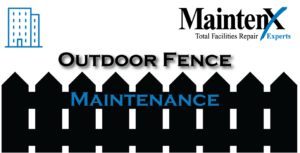 The face of the workforce is rapidly changing, and that shift brings with it new working conditions. Because millennials comprising an increasing portion of the working population, and they carry with them a new set of standards, half of all employees now work remotely. The key to a successful home office is to create an environment that is comfortable and stimulates productivity. Here are some tips you can pass along to your remote workers.
The face of the workforce is rapidly changing, and that shift brings with it new working conditions. Because millennials comprising an increasing portion of the working population, and they carry with them a new set of standards, half of all employees now work remotely. The key to a successful home office is to create an environment that is comfortable and stimulates productivity. Here are some tips you can pass along to your remote workers.
Location can make or break your home office. Because you will likely be spending most of your day in the office, you need to use adequate space and make sure you can be there comfortably for hours at a time. It is best to dedicate a space to this rather than simply retrofitting a desk into a bedroom or living room. Productivity is boosted when you can “go to work” and get away from the norms of a home. It is also important to make sure there is adequate natural lighting, so set up shop in a space with a window.
If you can’t dedicate an office room, partition your office space for better productivity. Maybe the corner of the living room is the only available space to work and have a desk. If this is the case, separate that space with shelving or a decorative curtain to make it feel like its own space. Studies show that offices set up in the living room or bedroom provide too many distractions, whether television or the internal desire to do work around the house that doesn’t pertain to your job.
When working from home, make sure your technology is sufficient. You need to take into consideration all the daily tasks you must complete for your job. If your job is file heavy, make sure your internet can handle the workload. While most people function strictly from a mobile phone these days, having a dedicated phone line in your house for work purposes is a must. Not only does it make the office more formal, it provides a more secure and stable connection between the worker and the outside world. You also need to ensure that all tech is reliably available and functional, including printers, scanners, and webcams.
Working from home can provide a wealth of benefits for the employee, but it can also come with a list of distractions and complications. Having a properly arranged office space can help to eliminate any negatives and promote productivity and efficiency. By issuing your mobile employees certain ground rules, you can maximize value for everyone.

 The types of plants you generally see around an office building usually share one common factor: they’re all fake. Fake plants have been popular for years, because they require zero maintenance. There are, however, several living plant types that are suitable for your office space and carry intrinsic benefits beyond decoration.
The types of plants you generally see around an office building usually share one common factor: they’re all fake. Fake plants have been popular for years, because they require zero maintenance. There are, however, several living plant types that are suitable for your office space and carry intrinsic benefits beyond decoration.
 Fences are great for protecting your building while adding a very nice aesthetic touch. Do you remember the feeling when you looked at your newly installed fence for the first time? I remember mine, and I was completely overjoyed with how much value it seemed to add to my property. Fast forward. How does your fence look now, and how does that make you feel? Let’s talk about fence maintenance – more specifically fence staining.
Fences are great for protecting your building while adding a very nice aesthetic touch. Do you remember the feeling when you looked at your newly installed fence for the first time? I remember mine, and I was completely overjoyed with how much value it seemed to add to my property. Fast forward. How does your fence look now, and how does that make you feel? Let’s talk about fence maintenance – more specifically fence staining.  Everyone knows that the exterior of their building is often the first impression that a new customer or client gets about their company. Too often overlooked, your fence can play a huge role in this impression – for better or for worse. When is the last time you took a good look at your fence? When was the last time you did anything to maintain or enliven it? While there are many materials used to build fences – wrought iron, PVC, wood, etc. – we are going to focus on some maintenance tips for the most common type of fencing: wooden.
Everyone knows that the exterior of their building is often the first impression that a new customer or client gets about their company. Too often overlooked, your fence can play a huge role in this impression – for better or for worse. When is the last time you took a good look at your fence? When was the last time you did anything to maintain or enliven it? While there are many materials used to build fences – wrought iron, PVC, wood, etc. – we are going to focus on some maintenance tips for the most common type of fencing: wooden. Just like landscaping, outdoor lighting at your facility can create a welcoming environment and a positive first impression of your business for potential customers. Lighting offers aesthetic appeal as well as enhanced security. Whether you have an intimate outdoor space or a sprawling parking lot, there are several factors to consider when planning your lighting install or upgrade.
Just like landscaping, outdoor lighting at your facility can create a welcoming environment and a positive first impression of your business for potential customers. Lighting offers aesthetic appeal as well as enhanced security. Whether you have an intimate outdoor space or a sprawling parking lot, there are several factors to consider when planning your lighting install or upgrade. Everyone is on the lookout for the latest “life hack,” quick tips and tricks to make something easier or better. A lot of time these hacks relate to the kitchen or home, but why not your office? Good lighting is vital to a healthy office; here are a few ideas to help you implement it more effectively.
Everyone is on the lookout for the latest “life hack,” quick tips and tricks to make something easier or better. A lot of time these hacks relate to the kitchen or home, but why not your office? Good lighting is vital to a healthy office; here are a few ideas to help you implement it more effectively. Updating your kitchen doesn’t have to drain your bank account. With a little time and ingenuity, you can change the entire look of your kitchen without spending a lot of money. Here are some cost-saving tips to get you started:
Updating your kitchen doesn’t have to drain your bank account. With a little time and ingenuity, you can change the entire look of your kitchen without spending a lot of money. Here are some cost-saving tips to get you started: